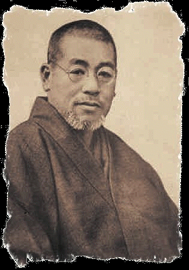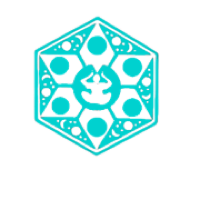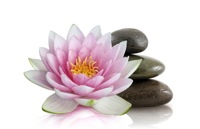History of Reiki
Mikao Usui
Born in Japan in the late 1800’s, Mikao Usui - Usui-Sensei studied many differing philosophies and religions. He trained in Kiko (the Japanese version of qigong), which is a health and healing discipline based on the development and use of life energy and he understood that these disciplines increased and depleted ones own energy. He wondered if it would be possible to do healing work without depleting one’s own energy!
 Usui travelled throughout Europe, China and Japan to further his education and psychic abilities, learning Sanskrit so that he was able to read and understand ancient teachings and Indian Sutras.There are many differing versions of the origin of Reiki and how Usui came to ‘see’ and ‘know’ the system that has evolved in the modern Western world. The main fact that appears coherent between differing accounts of the beginning of the re-discovery by Usui Sensei of Reiki is that he received an enlightening and profound experience whilst meditating and fasting for 21 days on Mount Kurama, in Kyoto, Japan.
Usui travelled throughout Europe, China and Japan to further his education and psychic abilities, learning Sanskrit so that he was able to read and understand ancient teachings and Indian Sutras.There are many differing versions of the origin of Reiki and how Usui came to ‘see’ and ‘know’ the system that has evolved in the modern Western world. The main fact that appears coherent between differing accounts of the beginning of the re-discovery by Usui Sensei of Reiki is that he received an enlightening and profound experience whilst meditating and fasting for 21 days on Mount Kurama, in Kyoto, Japan.
One such version is that Usui enrolled in Isyu Guo, a 21 day training course by the Tendai Buddhist temple located on Mount Kurama and on the 21st day, the great Reiki energy entered through his crown chakra and he realised that he had received Satori (Zen enlightenment) and a wonderful new gift – that of healing without depletion of his own energy. The reason for saying ‘re-discovery of Reiki’ is that there are interesting parallels that can be seen between the Reiki discovered by Usui, the 4 symbols Usui Sensei ‘received’ (covered in Reiki II) and the ancient healing disciplines practised by the Kurama-Koyo Buddhists.
There are many differing books and research that portray the history of Reiki and further research maybe valuable in an understanding and inner knowing of the history and various accounts of the history, both Eastern and Western.
As Usui Sensei walked down from the mountain, he stubbed his toe – in pain and bleeding he grabbed his toe with his hands and in minutes, the pain and bleeding stopped. This incident was his first proof.
When he reached the foot of the mountain, he stopped at a tea seller for food. The tea seller, realising that Usui had been on the mountain for some time, offered him gruel to break the fast. Usui refused and ordered rice. The tea seller warned Usui not to eat such a large meal following such a fast, but Usui suffered no ill effects. This was his second proof.
The daughter of the tea seller was suffering toothache and had been for days. By way of exchange for his meal, he laid his hands on her face and the pain stopped and the swelling receded. This incident was his third proof that he has acquired healing abilities.
Usui worked in a beggar camp in Kyoto for the 7 years following his enlightened experience. He gave lectures and demonstrations and in 1922 moved to Tokyo and commenced a healing society by the name of ‘Usui Reiki Ryoho Gakkai’ ( Usui Reiki Healing Society) and opened a clinic to offer treatments and teaching Reiki classes to others. Following the Kanto earthquake that devastated Tokyo in 1923, demand for his ability as a healer grew and taught more that 2000 students and initiated 16 teachers before his death in 1926.
When Usui taught Reiki to others, several sources indicate that there was no formal attunement process, as is taught in the West today and that by merely spending time in the presence of Usui with intent to receive and to give, the process passed between teacher and student.
As the Reiki ‘movement’ grew, a formal process of attunement and positions for the laying of hands developed.
Dr Chujiro Hayashi
Dr Chujiro Hayashi, a retired naval officer, was a respected Reiki Master in the Society and one of the 16 teachers initiated by Usui. He was charged with keeping the essence of Reiki intact after Usui's death. Dr hayashi kept records of treatments which demonstrated that Reiki finds the source of the physical symptoms, fills the energy need, and restores the body to wholeness. He used this information to develop a manual and healing guide, listing a range of illnesses and the hand positions that his research indicated the best way to treat them. This was given to all his students that attended his own Reiki School. He developed the system of three degrees and the attunement process.
HawayoTakata
Through ill health, she was directed to the clinic of Dr Hayashi. Born a daughter of Japanese immigrants, living in Hawaii, she travelled to Japan in later years to seek help for a tumour and severe asthma, though before being operated on she chose to visit Dr Hayashi’s Reiki clinic.
After receiving four months of treatment, she was completely healed and learnt Reiki at Hayashi’s School, becoming a Master in 1938 after returning to Hawaii with Hayashi to establish a school. She subsequently travelled through the United States and other parts of the world teaching and practising Reiki.
Twenty two Reiki Masters were initiated by Mrs Takata including her granddaughter Phyllis Furumoto, who succeeded her as Grand Master upon her death in 1980. Ms. Furumoto remains the current Grand Master of Usui Shiki Ryoho.
Usui Shiki Ryoho
‘Usui Shiki Ryoho’ refers to the system of Reiki that has come to us via the lineage: Mikao Usui, Chujiro Hayashi, Hawayo Takata. While on several occasions Takata Sensei referred to Reiki as ‘Usui Reiki Ryoho’ the society that Usui established in Tokyo) she used the name ‘Usui Shiki Ryoho’ on her certificates.
Reiki was and always is a very simple system that can be used by all. As such, students are encouraged to develop and trust their own feelings as to their course of development and learn to trust in their inner knowing and seeing abilities.



